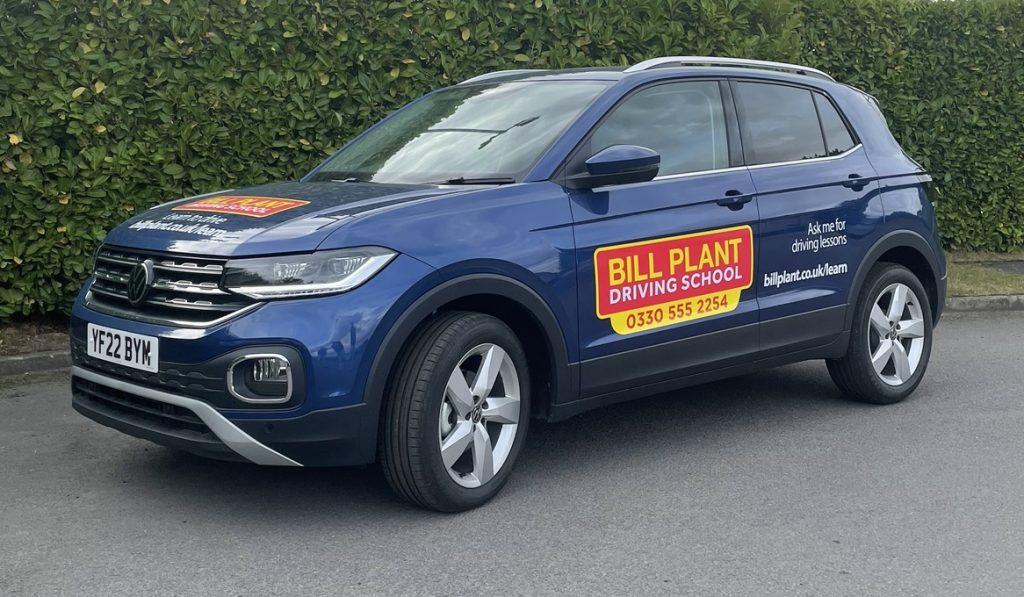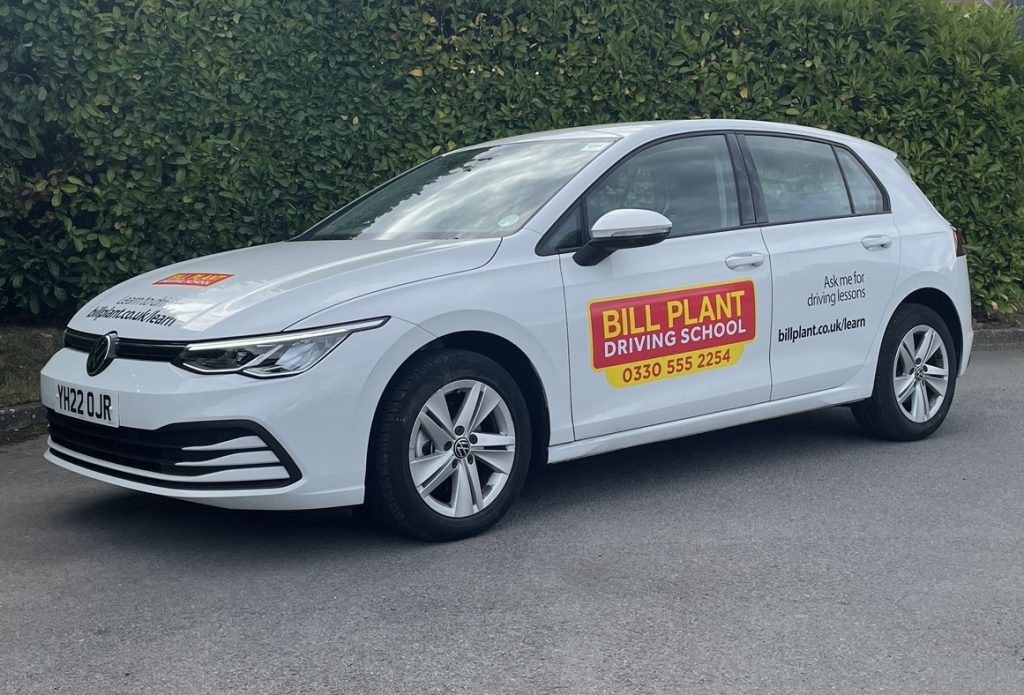The road signs UK road users see daily are there to help direct and instruct, thus keeping the roads safe. Because of this, it’s essential to understand their different meanings and if you’re going to be sitting your theory test, studying the highway code is vital.
This post will help you understand the colours and shapes used to advise road users of potential hazards and changes on the road. Once you know them, you can easily and quickly identify signs and the important information they’re conveying.
Other resources to help improve your driving skills include changes to the highway code, driver road safety for cyclists, driver trainer’s top tips, and how to prepare for your practical driving test.
The Basics Of Road Signs
While we might not always know what a road sign means, we can get a better idea by understanding what different shapes and colours are used on road signs in the United Kingdom.
Round signs
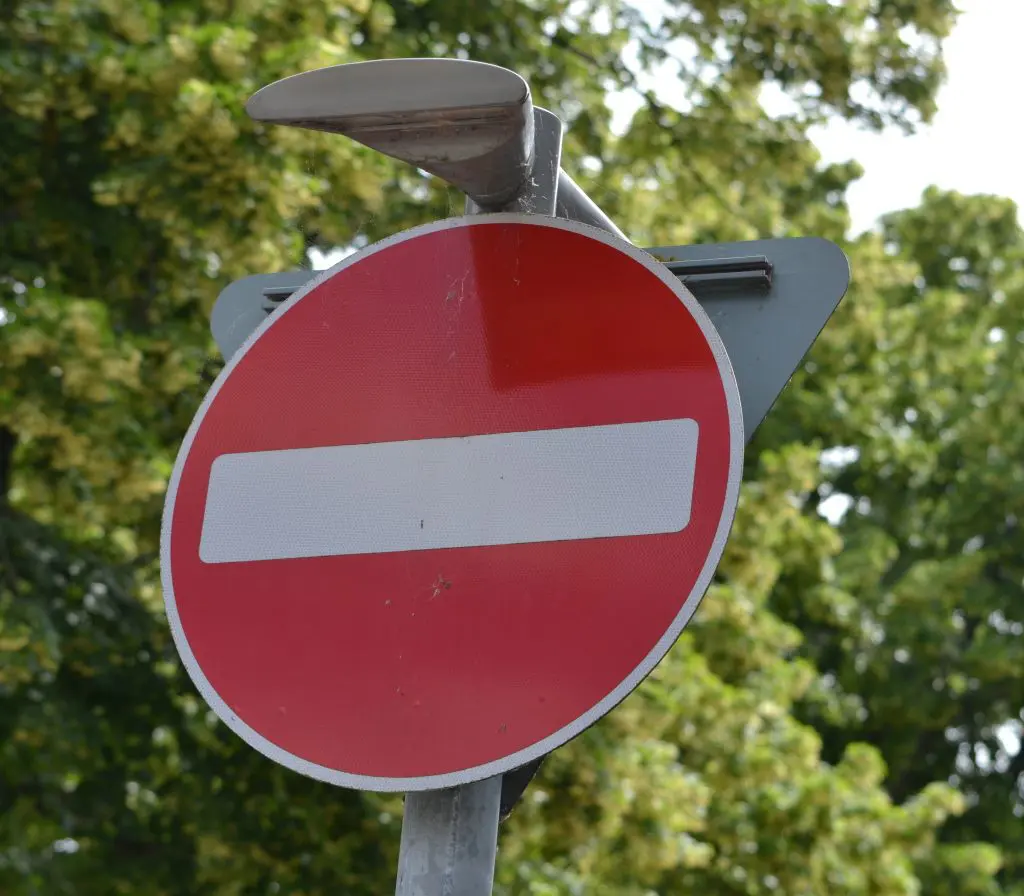
Circular road signs give orders, and those that include red borders let you know that an action is prohibited. An example of this could be a sign indicating that no right turns are permitted at a specific junction, or when a national speed limit applies. You might also see the vehicles carrying explosives signs – rare circular signs with a red border.
If you come across a round sign with a blue border, this will be instructing you to do something. In this case, it could be telling you that you must turn left at the junction.
Triangle Signs
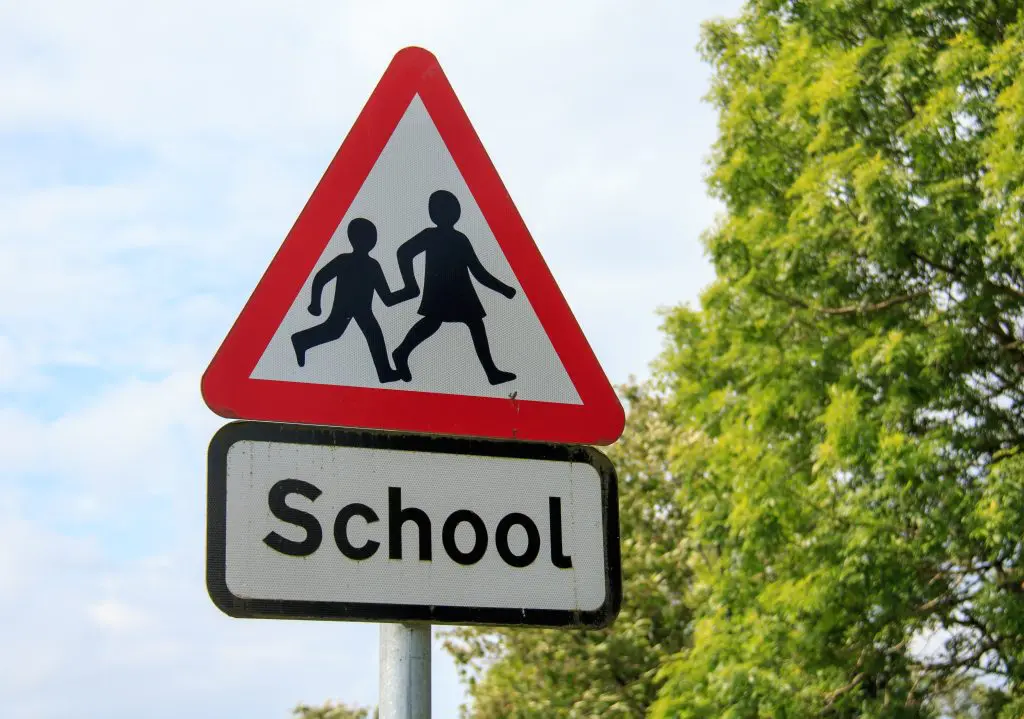
Triangular signs are used as warning signs to road users. These traffic signs will typically have a red border and advise of potential road hazards like animals and sharp bends.
Rectangle Signs
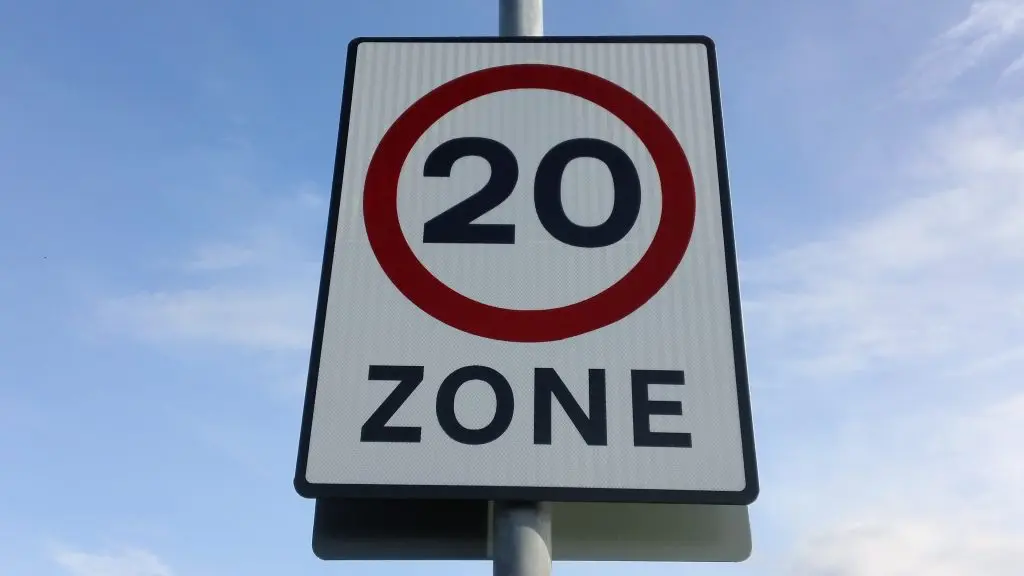
Rectangular signs are most commonly used and provide road users with information and directions. Rectangular signs with a blue background on motorways will give directions. On other roads, they will give the drivers information.
Direction signs used on minor roads will be white rectangles, while those used on primary routes will be green rectangles.
Octagon Signs
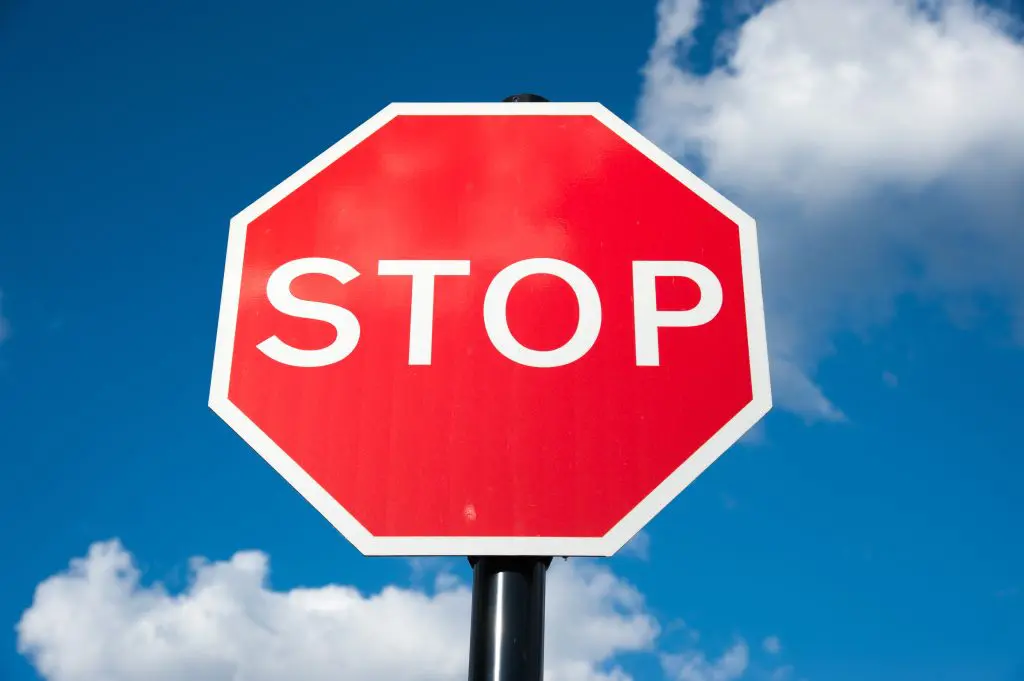
Octagonal signs are only used for stop signs, meaning you must stop at the sign and give way to traffic on a major road. The sign is red with a white border and white writing saying “Stop.”
This shape is only used to provide the instruction to stop, making it instantly recognisable, even if it is dirty or covered by snow.
Upside Down Triangle Signs
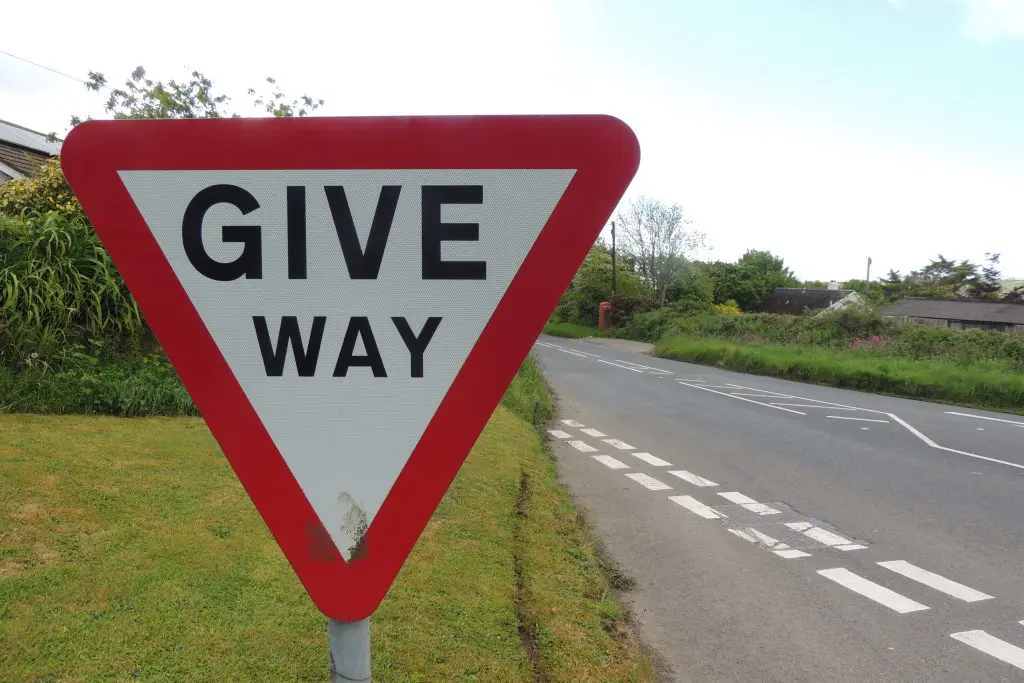
Like a stop sign, the only use of an upside-down triangle is for a ‘Give Way’ sign. The white sign with a red border and black writing lets road users know the instruction, even if it is partially obstructed.
Coloured signs
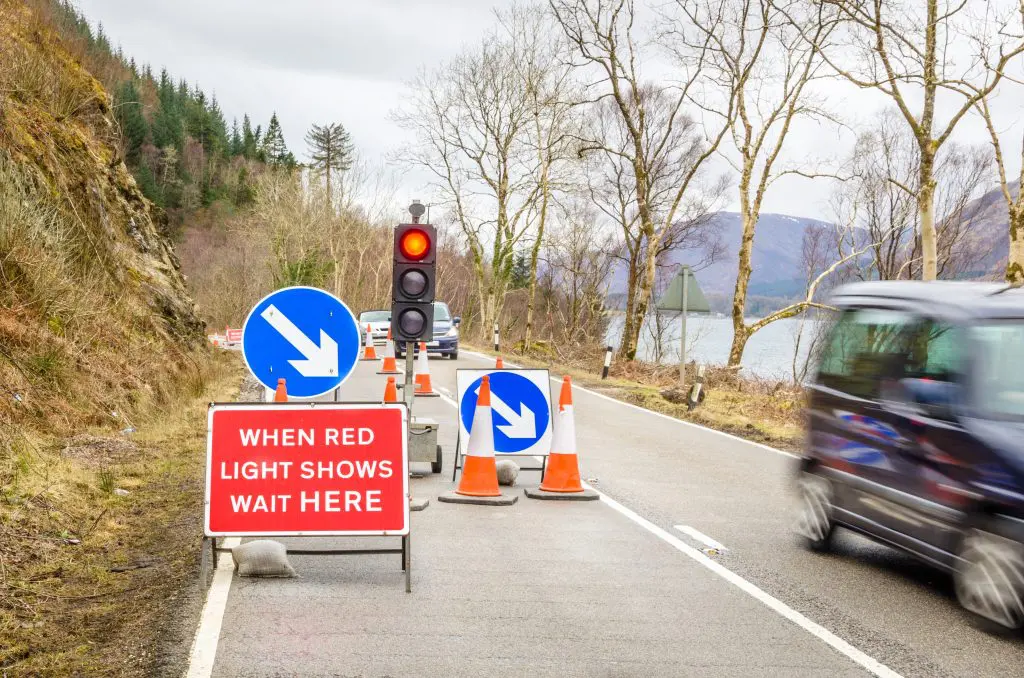
The use of colour on road signs also advises the driver of the information or instruction.
Green
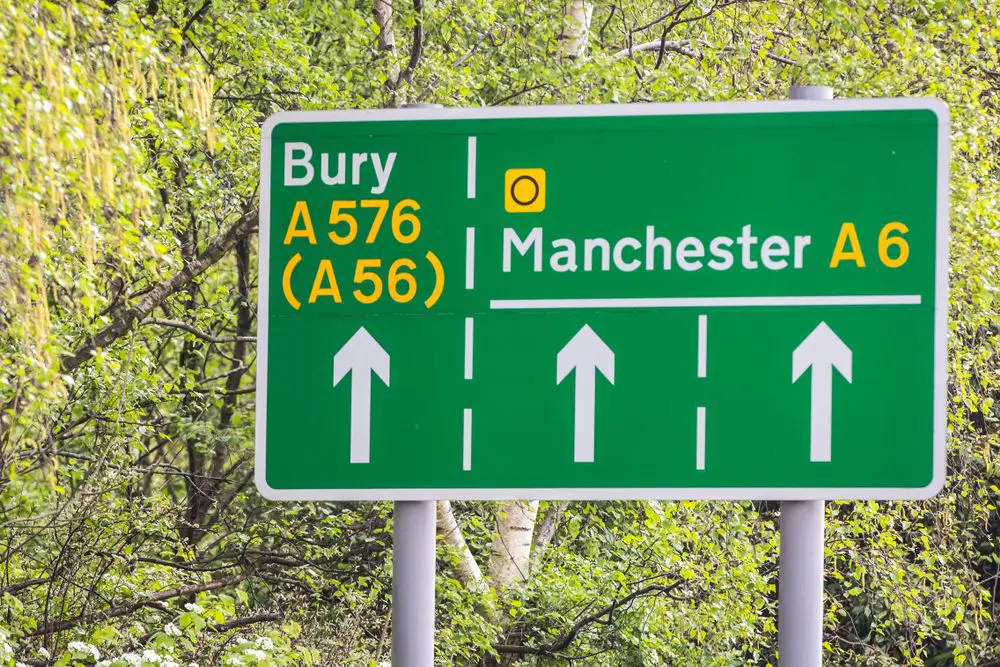
Dark green is the background colour of direction signs on primary routes and would not be used on a warning or regulatory sign.
Light or bright green is used as a background on some signs that might indicate quiet lanes used by other road users or provide directions to emergency services vehicles.
Brown
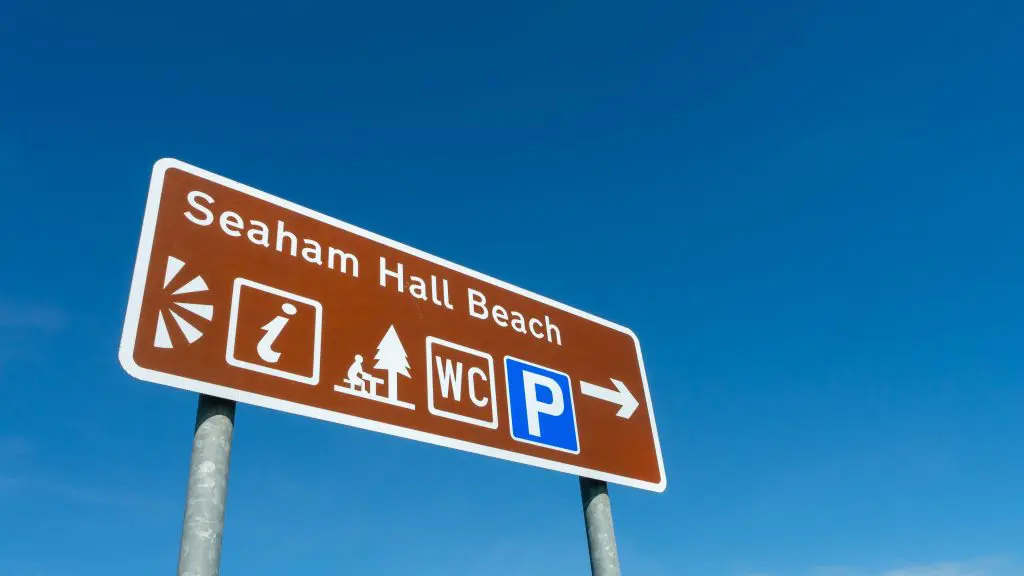
Brown signs are used for tourist destinations or attractions and will usually have an image or symbol letting you know what it is for.
Yellow
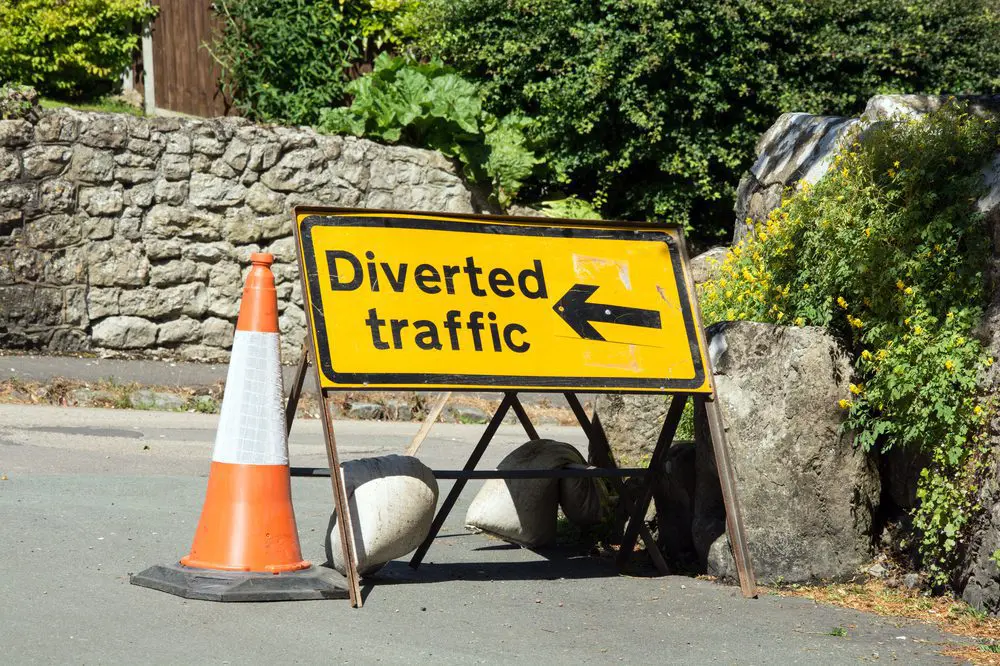
Yellow road signs draw the road users’ attention and typically indicate regulations such as loading, waiting, and parking restrictions.
Temporary diversions and directions are also indicated on yellow signs.
Black
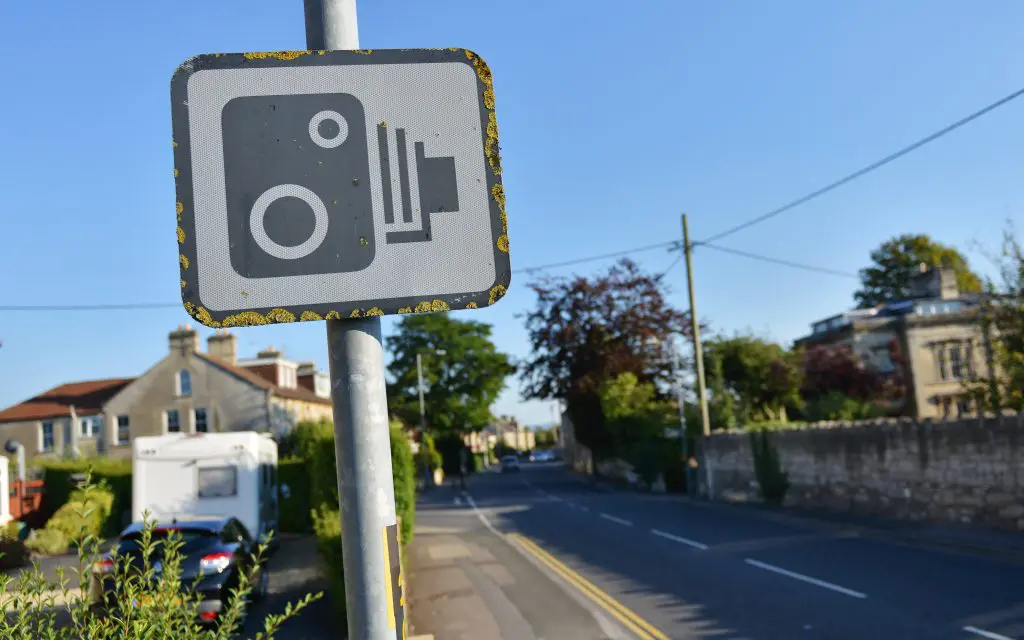
While black writing is used on many lighter coloured signs, signs with black backgrounds are only used for heavy goods vehicles (HGVs) and usually include an image of a lorry.
You will only see a black background on a sign in the small panel on bigger signs denoting the junction number in white numbers.
Key Road Sign Categories
There are many road signs to learn, so getting a better idea of their categories will help you determine why the road sign is there and what it is telling you.
Signs giving orders
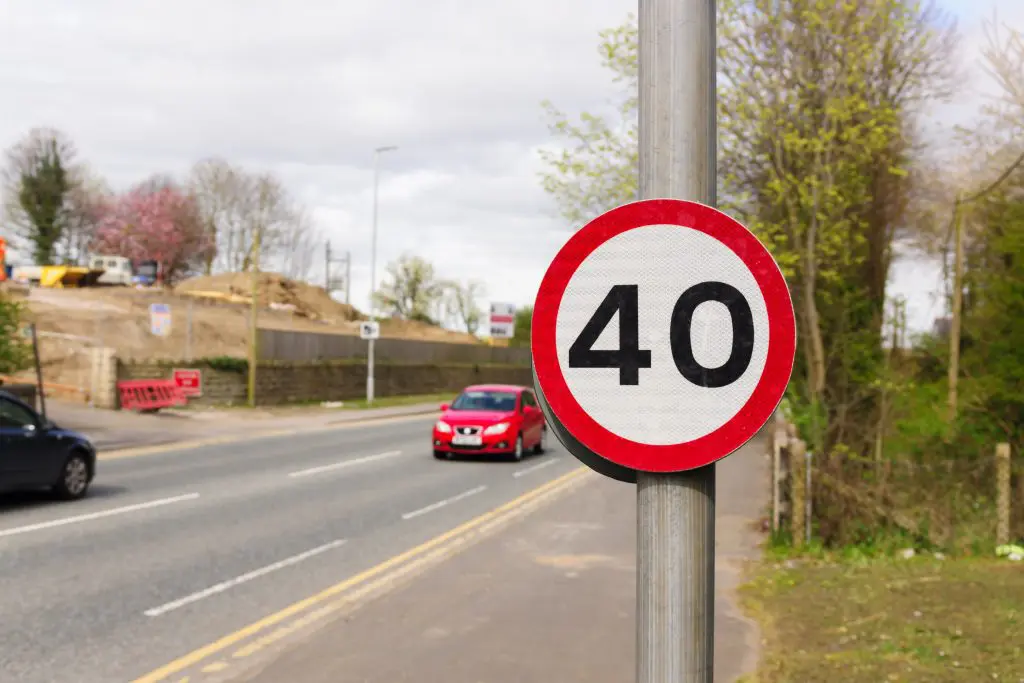
Some signs are there to tell you precisely what you can and can’t do. Road signs that give orders do this for a reason, and adhering to them ensures a better level of road safety for all road users and pedestrians.
If the road sign is round with a red border, it advises you not to do something, whether that is overtaking a vehicle, exceeding a speed limit, or stopping motorised vehicles entering a street.
Example 1: Maximum speed limit
Maximum speed limit signs are straightforward to read. They are round with a red border and white background with the maximum speed limit printed in large black numbers in the centre.
Example 2: Give way
Give way signs are unique in shape and are inverted or upside-down triangles. They have a red border, white background and black lettering. This shape helps road users know what it is straight away, much like the hexagonal stop sign.
Example 3: No motor vehicles
The no motor vehicles sign is round with a red border, white background, and black symbols of a car and motorcycle.
Warning signs
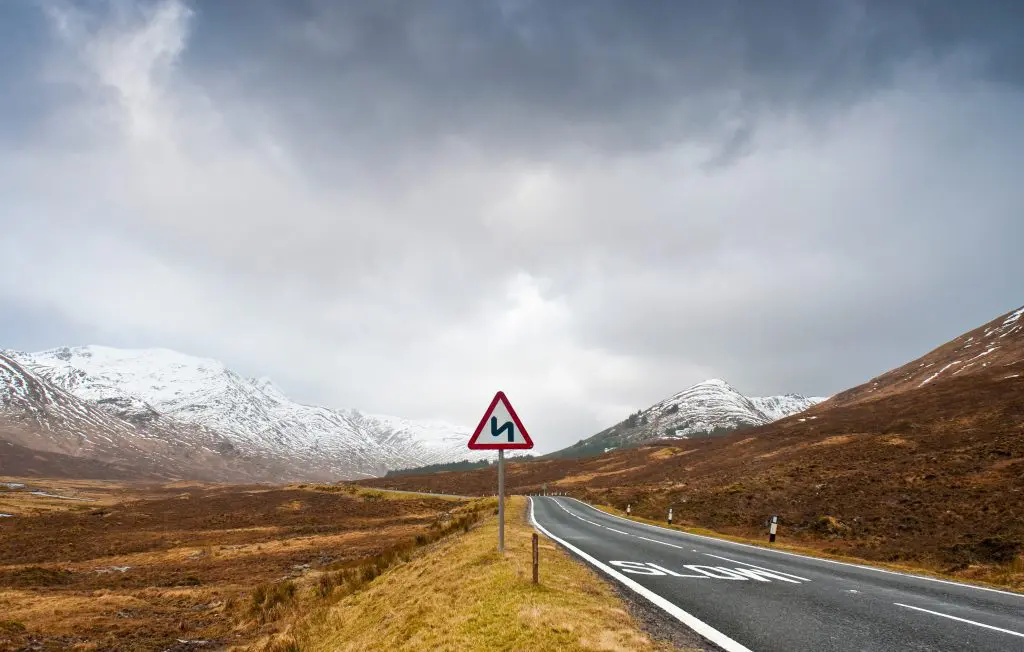
Most warning signs are triangular, have a white background and red border. They let you know about potential hazards ahead, such as bends in the road, approaching crossroads, or roundabouts.
Example 1: Road narrows
The ‘road narrows’ sign is triangular with a red border and white background. The black lines represent the road, and either the line on the left, right, or both will indicate whether one or both roads narrow.
Example 2: Crossroads
The triangular ‘crossroads’ sign has a red border, white background, and thick black line with a pointed top indicating the road the driver is travelling on. A smaller black line cuts across the centre to demonstrate where the adjacent roads meet.
Example 3: Steep hill
A ‘steep hill’ sign is triangular with a red border and white background. A black triangle then points up or down to indicate whether it is a downwards or upwards hill you are approaching. The hill’s gradient is then shown as a percentage above the triangle.
Direction signs
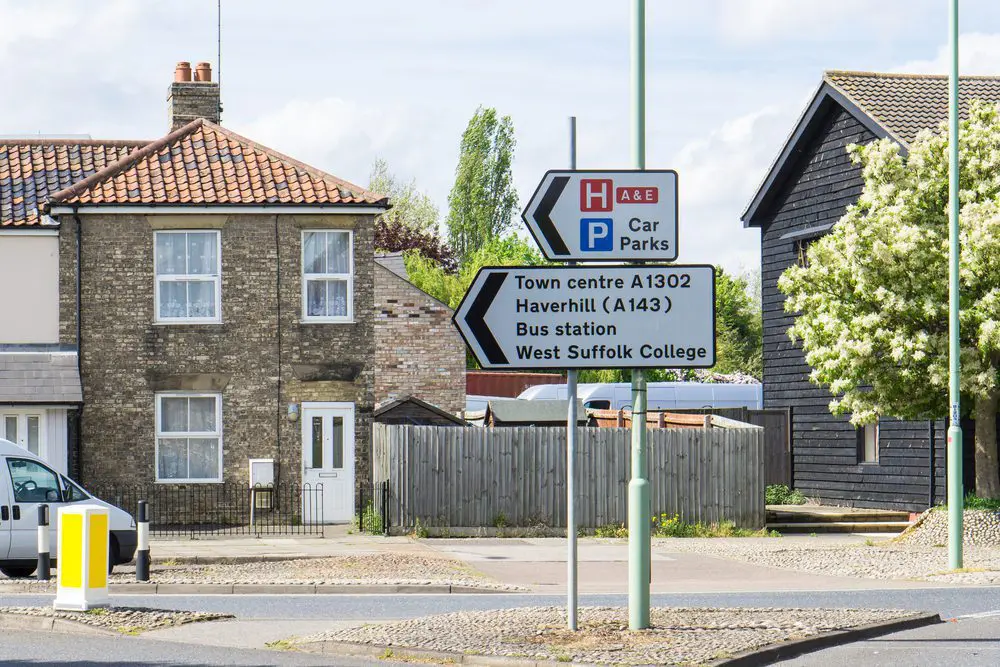
Direction signs help drivers know where and when to turn off for specific destinations. They are different colours depending on the road they are found on.
Example 1: Signs on motorways
Motorway direction signs have a blue background with a white border and white writing. They will often tell you how far it is to a specific turn off, where the turn-off leads, and the junction number in a black box with white writing.
They can be located over the motorway, telling you which lane leads to specific destinations and can advise the distance in miles to major cities.
Example 2: Signs on primary routes
Primary route signs have green backgrounds and will advise of motorways by naming them in a box with a blue background and non-primary routes in white boxes with black writing.
Example 3: Signs on non-primary routes
Non-primary route signs have a white background with a black border and white writing. Boxes signify directions to motorways with blue backgrounds and white writing and primary routes by green boxes with white writing.
Information signs
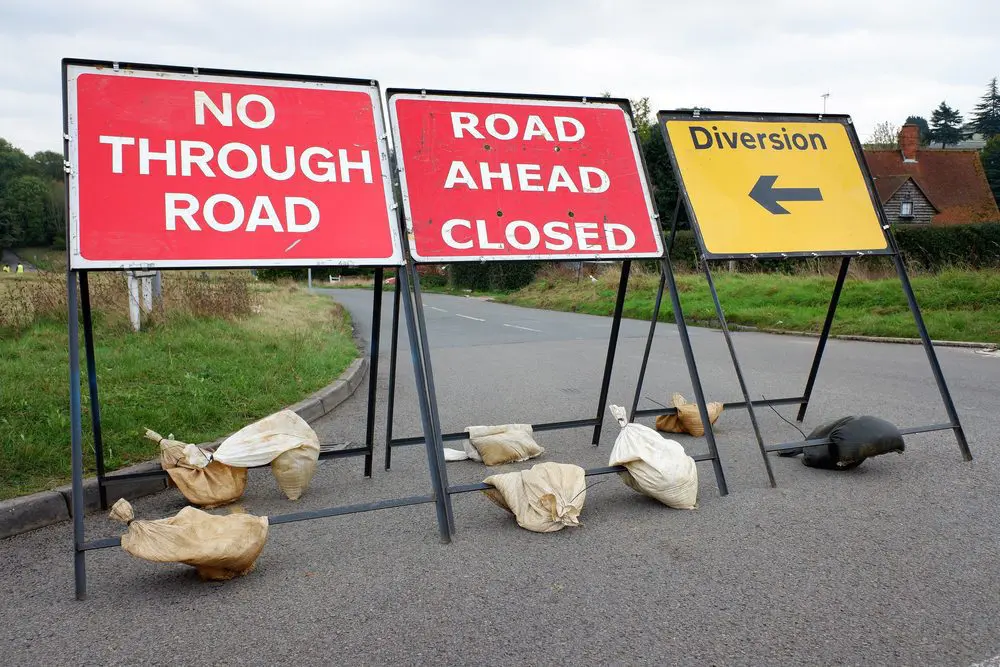
Information signs are rectangular and give road users information about many things, including congestion charges, parking regulations, traffic lanes for the junction ahead, motorway service stations, and more.
Example 1: Congestion zone
The ‘congestion zone’ sign is unique to London and features a white rectangular sign. The centre of the sign is a red circle with the white letter ‘C’. At the bottom of the sign, you will find what days and times it is applicable, letting you know when the zone is enforced.
Example 2: Parking
Parking signs are instantly recognisable. The blue background and large white ‘P’ let you know that parking is available. Sometimes a symbol will be attached below, such as a motorcycle, to let you know the vehicles the parking is designed for.
Example 3: End of motorway
The end of the motorway sign has a blue background and symbol of two lanes with a bridge crossing it. A large red line crosses from the bottom left to the top right, indicating that the motorway has ended.
Road work signs
Road work signs can differ in shape or colour depending on the message they provide for the driver. This can consist of general information to instructions.
Example 1: Road works
The road work sign is triangular, bordered in red and has a white background. The symbol inside shows a person at work shovelling. This lets you know that road works are commencing on the road ahead.
Example 2: Temporary hazard
Temporary hazard signs are rectangular, red with a white border and white writing advising the hazard.
Example 3: Mandatory speed limit
The mandatory speed limit sign is rectangular with a yellow background and black border. The black writing lets you know when the speed limit will be enforced. The speed limit is shown in a red-bordered circle with a white background and black numbers.
How To Learn Road Signs For Your Theory Test
Learning road signs and meanings will be an important part of your theory test and luckily you’ll be able to study your highway code and search online for tests. Knowing the UK signing system on the roads will also be necessary for your driving lessons.
Understand the different shapes and colours
Knowing the shapes and colours of UK road signs will help you work out ones you aren’t sure about. For example, knowing what information would be shown in a triangular road sign will help you narrow its meaning.
Know the most common signs
You should learn the most common signs, such as speed limits, stop signs, no entry for vehicular traffic, and give way signs. This will help you understand the basics that you can build on through experience and study.
